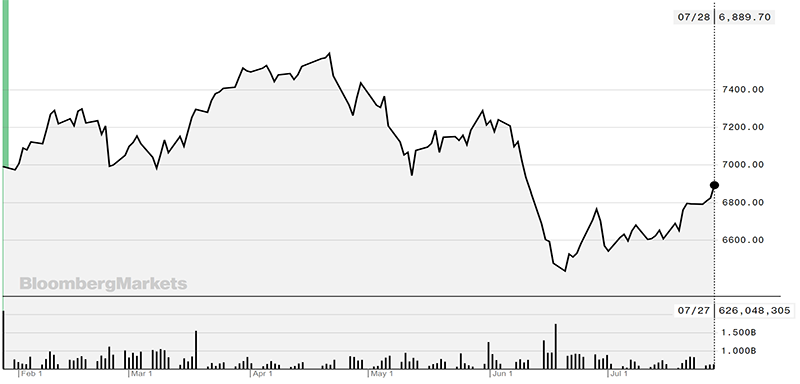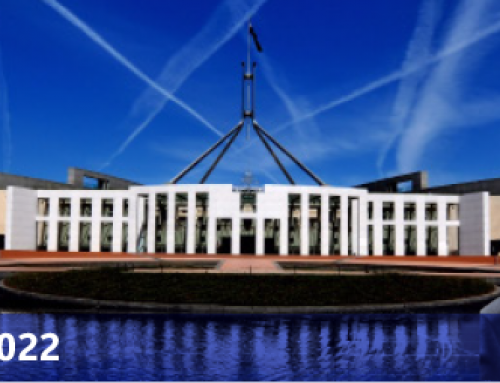There’s no avoiding the fact that it has been a difficult few months for investment markets. The Australian share market, as measured by the ASX200 is down 10.6% since this year’s peak back on the 21st of April.
S&P/ASX 200 Index – 6 mth movement to 28 July 2022

Source: Bloomberg Markets
Likewise, the US share market, as measured by the S&P500 index has fallen 14.4% since its peak back on the 29th of March. The tech focussed Nasdaq index has fallen even further.
US S&P 500 Index – 6 mth movement to 28 July 2022
However, as usual a bit of context is needed. Again, looking at the ASX 200 over the past 5 years, it has returned 19.4% even after allowing for the current fall and the falls in March 2020 and at the end of 2018. Investing in Cash won’t get you those sorts of returns and again emphasises our key investment message, which is to stick to your long-term investment plan.
Financial commentators are increasingly talking about the likelihood of a recession (usually quoting that it will occur in mid to late 2023. What’s driving this talk, and should we be concerned? In its simplest form, what these commentators are saying is that central banks (in particular, the US Federal Reserve) will hike interest rates too hard and instead of curbing inflation by gentling squeezing the brakes on the economy they’ll stamp too hard and bring everything to a shuddering halt.
The tightening of monetary policy is usually delivered to markets with a time lag effect as it takes time for the increased monthly repayments to effect consumer behaviour or to challenge corporate credit. With continued policy tightening (ie interest rate rises) expected into the second half of 2022
We believe it is likely that the US economy has already entered a technical recession, as the widely followed Atlanta Federal Reserve GDP nowcast model suggests that current quarter two GDP is -2.1% as at the end of June, following on from a -1.5% in quarter one. A -2.1% forecast is a large enough model outcome to suggest that for quarter two GDP – we should expect a second consecutive negative GDP forecast and the technical definition of a recession.
The cause for optimism is that if we can observe that the economy is contracting, then you can be sure that Jerome Powell, the Chairman of the US Federal Reserve, has noticed as well. At the time of writing, Powell had just announced the latest increase in the US Cash benchmark to 2.25-2.5% (nb: the US expresses its target cash rate as a range not an integer) an increase of 0.75%. In his speech he indicated that while he was determined to bring inflation under control, future rate increases would not be nearly so aggressive. He appears to be targeting a cash rate of 3.5% by the end of the year. Markets responded positively to this announcement with the US market rising roughly 1.7%.
It should be noted that a technical recession, which gets the financial commentariat excited, is not something that those of us who live in the real world should be overly concerned about. Recessions only become real and problematic when demand slumps to the point where companies cut back production and lay off staff. However, that is clearly not the case at the moment. Employment figures both here and in the US remain very strong (the US unemployment rate is currently 3.6% and has been stable at this figure for the past four months). This indicates that any economic contraction, as a result of interest rate rises, is relatively minor.
The other cause for some optimism is that the International Monetary Fund is still forecasting economic growth (albeit reduced growth) of 3.2% for 2022 and 2.9% for 2023. In its worst-case scenario these figures are 2.6% for 2022 and 2.0% for 2023.



